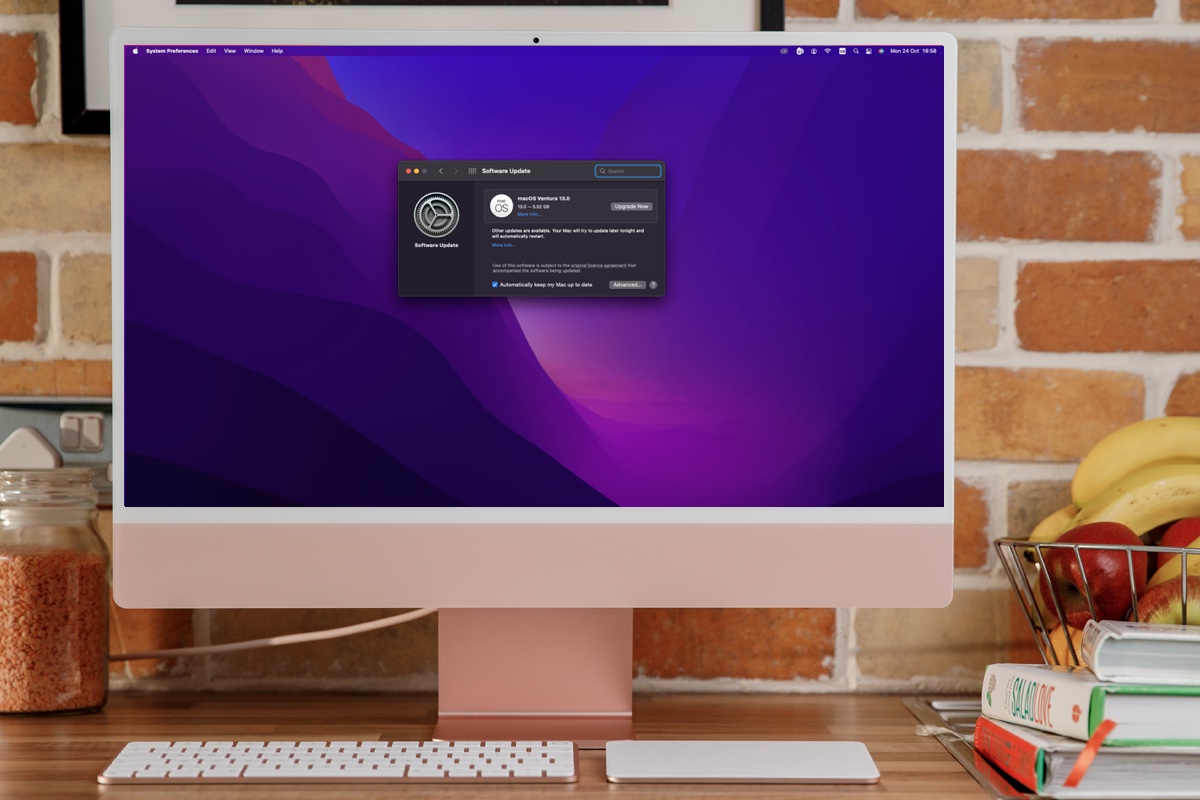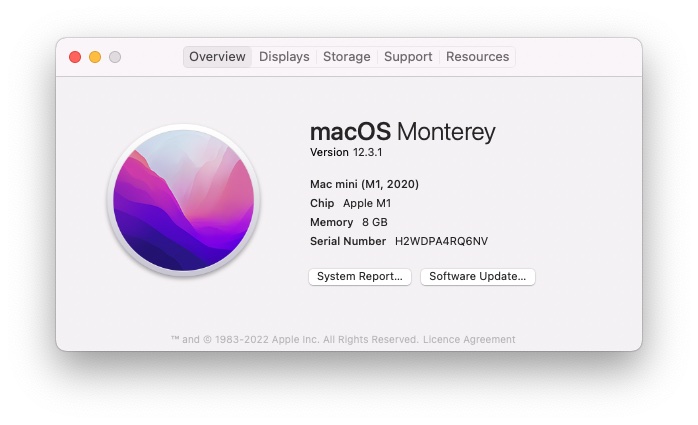Wondering what the name of the latest macOS version is? Curious about the versions of Mac OS X that came before? Here we’ll fill you in on the names of the different versions of the Mac operating system in order: from the newest macOS to the first version of Mac OS X and the codenames that Apple used for them. We’ll also show you how you can check which version of macOS you are running and find out what the latest version of macOS is.
If you are wondering what the latest version of macOS is it’s Ventura! Also known as macOS 13. Ventura arrived on Monday, October 25, 2022. For more information read: Everything you need to know about macOS Ventura.
However, Ventura will eventually be replaced in the fall of 2023 with whatever the next version of macOS will be – Apple will reveal all at the keynote that kicks off the WWDC conference for 2023 before making the final version available to download in the fall (usually in the September or October time frame).
If you are looking for help installing Ventura read: How to update macOS and Fixes for Macs that won’t update macOS. If you want to install the latest beta of macOS Ventura read about joining Apple’s beta program.
History of macOS
Mac OS X first launched more than twenty one years ago on 24 March 2001. There’s been a lot of change over those two decades: good and bad. From the problems with the first edition (it was slow and didn’t run important apps like Microsoft Word) Mac OS X has evolved through various iterations and various designs to what we know today. We’ve seen tight integration with iOS devices, the incorporation of the cloud, and the arrival of excellent and helpful features including integrated Time Machine back ups, Quick Look – which lets you see a preview of a document without opening the application, and innovations like Expose and Spaces and Desktop Stacks to help you work efficiently.
For an overview of the features of the various versions of the Mac operating system, showing how it has developed over time, take a look at our video above. If you want to know the names Apple assigned to Mac OS X over the years, and the codenames that were used internally, read on.
List of macOS version names
Here’s an overview of every version of macOS and Mac OS X Apple has released. You’ll find a complete list of the latest release of each version of OS X and macOS, along version code names, along with internal code names (if available):
- OS X 10 beta: Kodiak – September 13, 2000
- OS X 10.0: Cheetah – March 14, 2001 (Latest: 10.0.4)
- OS X 10.1: Puma – September 15, 2001 (Latest: 10.1.5)
- OS X 10.2: Jaguar – August 14, 2002 (Latest: 10.2.8)
- OS X 10.3 Panther (Pinot) – October 24, 2003 (Latest: 10.3.9)
- OS X 10.4 Tiger (Merlot) – April 29, 2005 (Latest: 10.4.11)
- OS X 10.4.4 Tiger (Chardonnay) – January 10, 2006 (for Intel Macs) (Latest: 10.4.11)
- OS X 10.5 Leopard (Chablis) – October 26, 2007 (Latest: 10.5.8)
- OS X 10.6 Snow Leopard – August 28, 2009 (Latest: 10.6.8)
- OS X 10.7 Lion (Barolo) – July 20, 2011 (Latest: 10.7.5)
- OS X 10.8 Mountain Lion (Zinfandel) – July 25, 2012 (Latest: 10.8.5)
- OS X 10.9 Mavericks (Cabernet) – October 22, 2013 (Latest: 10.9.5)
- OS X 10.10: Yosemite (Syrah) – October 16, 2014 (Latest: 10.10.5)
- OS X 10.11: El Capitan (Gala) – September 30, 2015 (Latest: 10.11.6)
- macOS 10.12: Sierra (Fuji) – September 20, 2016 (Latest: 10.12.6)
- macOS 10.13: High Sierra (Lobo) – September 25, 2017 (Latest: 10.13.6)
- macOS 10.14: Mojave (Liberty) – September 24, 2018 (Latest: 10.14.6)
- macOS 10.15: Catalina (Jazz) – October 7, 2019 (Latest: 10.15.7, Security Update 2022-005)
- macOS 11: Big Sur (GoldenGate) – November 12, 2020 (Latest: 11.7.1)
- macOS 12: Monterey (Star) – October 25, 2021 (Latest: 12.6.1)
- macOS 13: Ventura (Rome) – October 24, 2022 (Latest: 13.0)
We have a full list of which Macs run which versions of Mac OS X and macOS here.
 https://b2c-contenthub.com/wp-content/uploads/2022/10/Ventura-on-a-Mac.jpg?resize=300%2C200&quality=50&strip=all 300w, https://b2c-contenthub.com/wp-content/uploads/2022/10/Ventura-on-a-Mac.jpg?resize=768%2C512&quality=50&strip=all 768w, https://b2c-contenthub.com/wp-content/uploads/2022/10/Ventura-on-a-Mac.jpg?resize=150%2C100&quality=50&strip=all 150w" width="1024" height="683" sizes="(max-width: 1024px) 100vw, 1024px" />
https://b2c-contenthub.com/wp-content/uploads/2022/10/Ventura-on-a-Mac.jpg?resize=300%2C200&quality=50&strip=all 300w, https://b2c-contenthub.com/wp-content/uploads/2022/10/Ventura-on-a-Mac.jpg?resize=768%2C512&quality=50&strip=all 768w, https://b2c-contenthub.com/wp-content/uploads/2022/10/Ventura-on-a-Mac.jpg?resize=150%2C100&quality=50&strip=all 150w" width="1024" height="683" sizes="(max-width: 1024px) 100vw, 1024px" />Foundry
Mac OS X and macOS names
As you can see from the list above, with the exception of the first OS X beta, all versions of the Mac operating system from 2001 to 2012 were all named after big cats, from Cheetah to Panther to Mountain Lion.
But while the public-facing builds were named after big cats, internally, they were named after wines (aside from OS X 10.6 which had no codename).
Even after Apple switched public-facing code names to places in California back in 2013, it carried on naming them after wines internally until 2014. In 2015, Apple decided to change the theme of internal code names from wines to types of apples. Original.
In 2016, Apple took the plunge to unify the branding of its operating systems by rebranding Mac OS X to macOS, which sits nicely alongside iOS, tvOS, and watchOS, and paved the way for macOS 11, the successor to Mac OS X, which arrived twenty years after the first beta of Mac OS X.
Which versions of macOS are still updated?
Apple still supplies regular features and security updates to the most recent version of macOS, Ventura, also known as macOS 13.
The previous two versions of macOS also receive security updates and bug fixes. The latest version of Monterey is macOS 12.6.1. Big Sur is macOS Big Sur 11.7.1. Those updates include critical patches as part of a security update.
Since the arrival of Ventura, macOS Catalina, which arrived in 2019, will no longer be supported.
Apple also issues updates to its Safari web browser. The latest version of Safari for Mac is 16.1 and it requires Big Sur, Monterey or Ventura.
 https://b2c-contenthub.com/wp-content/uploads/2022/10/Ventura-download.jpg?resize=300%2C200&quality=50&strip=all 300w, https://b2c-contenthub.com/wp-content/uploads/2022/10/Ventura-download.jpg?resize=768%2C512&quality=50&strip=all 768w, https://b2c-contenthub.com/wp-content/uploads/2022/10/Ventura-download.jpg?resize=150%2C100&quality=50&strip=all 150w" width="1024" height="683" sizes="(max-width: 1024px) 100vw, 1024px" />
https://b2c-contenthub.com/wp-content/uploads/2022/10/Ventura-download.jpg?resize=300%2C200&quality=50&strip=all 300w, https://b2c-contenthub.com/wp-content/uploads/2022/10/Ventura-download.jpg?resize=768%2C512&quality=50&strip=all 768w, https://b2c-contenthub.com/wp-content/uploads/2022/10/Ventura-download.jpg?resize=150%2C100&quality=50&strip=all 150w" width="1024" height="683" sizes="(max-width: 1024px) 100vw, 1024px" />Foundry
How to tell which macOS version you are running
You can tell which version of macOS you are running by clicking on the Apple logo in the top left and choosing About This Mac. It will clearly show which version of macOS you are running along with the most recent version that your Mac has installed
 https://b2c-contenthub.com/wp-content/uploads/2022/05/Latest-version-of-macos.jpg?resize=300%2C183&quality=50&strip=all 300w" width="698" height="425" sizes="(max-width: 698px) 100vw, 698px" />
https://b2c-contenthub.com/wp-content/uploads/2022/05/Latest-version-of-macos.jpg?resize=300%2C183&quality=50&strip=all 300w" width="698" height="425" sizes="(max-width: 698px) 100vw, 698px" />Foundry
How to install the latest version of macOS
If you want to update your Mac to a newer version of macOS the method will be determined by the version of macOS you are running.
Very old versions of Mac OS X came on a disk and any security updates came via Software Update. Since the arrival of the Mac App Store in 2011 (as an update to Snow Leopard) versions of Mac OS X and macOS have been available to download via the Mac App Store.
However, that changed slightly with Mojave, which arrived in 2018. Now operating system updates come in via a new Software Updates pane in System Preferences. You can still find the software in the Mac App Store, but you will also see it in System Preferences > Software Update. One of the benefits of this is that your Mac can be set to automatically download the latest updates and install them, keeping your Mac up-to-date with minimum effort on your part.
You can get to System Preferences from the Apple menu: Click on the Apple logo in the top left and choose System Preferences. You may be taken straight to the Software Update pane, if not click on the Software Update cog icon. Your Mac will search for an update and if there is one you can choose Update Now.
Some Macs will be set to update macOS automatically. If you want your Mac to update automatically follow these steps:
In Ventura, Monterey, Big Sur, Mojave, or Catalina:
- Open System Preferences.
- Click on Software Update.
- Check the box beside Download new updates when available.
- Now select the box Install macOS updates.
In High Sierra or earlier:
- Open System Preferences.
- Click on App Store.
- Check the box beside Automatically check for updates – it should have a tick in it as should the four options below that…
- Now deselect the box beside Download newly available updates in the background.
Read all about how to update your Mac here.





